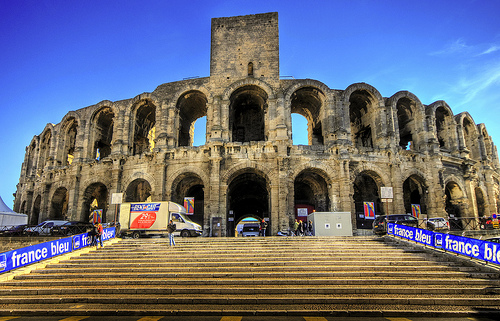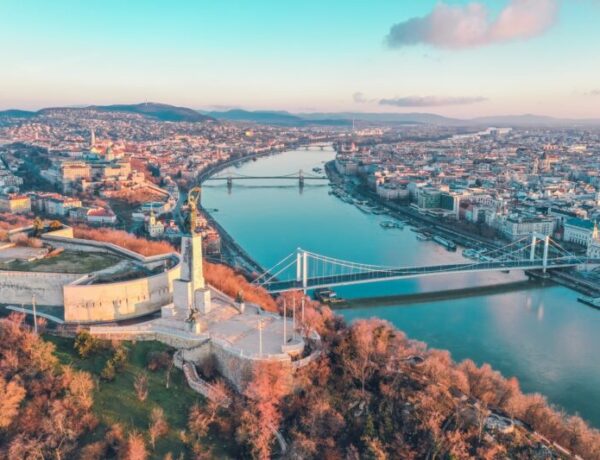Nîmes is the hottest city in France, with 300 days of sunshine a year and summer temperatures reaching more than 45 degrees Celsius, but when I arrived there in late September, it felt cold to me. I’d just come from the Caribbean to spend a year in France teaching English after graduating from university. It would be a year of ups and downs, but also a year of great inspiration. Nimes is an ancient Roman city and signs of that civilization’s presence were everywhere, not least around the corner from my apartment.
Place aux Herbes

For most of the year I spent in Nîmes, I lived in Place aux Herbes, a small cobbled square where the traditional French experience and culture were on my doorstep. Below my apartment were three cafes and two boulangeries, with the Les Halles food market a two minute walk away. The nearby Boulevard Jean Jaurès was replete with wonderful cafes and other eateries, so there was plenty of opportunity to try a wide range of dishes and sample the wine. Most of the time, though, I kept it simple – picnic style – there was nothing to beat a baguette, some Camembert and a bottle of Evian as I travelled around Nimes and the surrounding area. There was plenty to see.
The Arenes

Obliquely opposite my apartment was the St Castor Cathedral, but this was just one of the many signs of the Romans’ occupation of this part of France. Nimes and the surrounding area are full of monuments and I found these awe-inspiring as I travelled around the region. One of the most amazing of sights I saw was the Arènes – a beautifully preserved Roman arena which dates from the time of the emperor Augustus. It was built between 90 and 120AD, around the same time as the Roman Coliseum. I went there to watch a tennis match, of all things, and was awed by the thought that people had been sitting on those very stones for nearly 2000 years. No matter how many times I passed it during the course of the year – at least a couple of times every day – I never ceased to wonder at it. If you visit Nîmes, you shouldn’t miss the chance to see this.
Roman Monuments

There were many other Roman monuments within walking distance of my apartment, including the Maison Carrée (Square House), a well preserved museum that was originally a temple dedicated to the sons of Agrippa; The Temple of Diane; and the Tour Magne, a Roman watchtower above the exquisite Jardins de la Fontaine, which itself was once the site of Roman baths and a temple. And 12 km outside Nîmes is the Pont du Gard (photo in the introductions), which once formed part of a network of Roman aqueducts. (Whenever I see photos of this, I find myself humming “Sur le pont d’Avignon, on y danse … (On the Avignon bridge, they dance)”
An Encounter With History

The region is a hotbed of history so it’s worth taking a few days out and visiting the old medieval capital of Avignon, the 13th century walled city of Aigues-Mortes, the Camargue, a marshy area where you can see huge herds of white horses and flocks of pink flamingos and the ancient city of Les Baux de Provence, a striking location where dwellings are carved into the rocks. Les Baux has been occupied since prehistoric times. I saw all of these and more during my year in Nîmes and in a way it was the first time history (not to mention my old Latin lessons) had really come to life for me. I’ve never forgotten that experience.
Photos by Wolfgang Staudt except Place Aux Herbs by @rbs and final photo by shadowgate





1 Comment
chicken cheesesteak in Clinton Township, MI
September 13, 2023 at 6:34 amI savour, cause I discovered just what I was looking for. You’ve ended my four day lengthy hunt! God Bless you man. Have a nice day. Bye